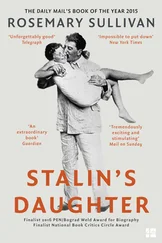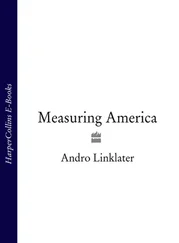After six months in the wilderness “under extreme ill health, during an inclement season,” Wilkinson passed his first night under a solid roof in Fort Adams on January 27, 1803. There he found the United States facing an international crisis over the long-settled question of navigation rights on the Mississippi. The emergency was precipitated by Juan Morales, acting intendant of Louisiana, who in October 1802 aribitrarily closed the depot at New Orleans to American goods. This precipitate move, interrupting trade worth almost two million dollars a year, was widely thought to be an aberration attributable to his interfering character.
In reality Morales’s orders came directly from King Carlos IV. Their purpose was to create an opening for French traders and represented the first public evidence of the secret treaty by which Spain had ceded Louisiana to France. When the treaty was signed in 1800, Talleyrand promised that French power would transform Louisiana into a “wall of brass” preventing further American expansion, and Napoléon gave an explicit assurance that the former French colony would never be transferred. A French army under General Charles Leclerc presently engaged in restoring order in Saint Domingue, present-day Haiti, was expected to land at the end of the year to take possession of the colony. His arrival would create an immediate French empire stretching from Guadeloupe in the West Indies to the Canadian border, with the French-dominated province of Quebec just beyond.
To Wilkinson’s frustration, even in this extreme situation he was given no orders to prepare the army for action. Lacking any direct information on the government’s intentions, he wrote Dearborn urging the need for the United States to move first to “get possession of New Orleans by treaty or by arms” before Leclerc arrived. In either event, he pleaded to be involved:
“In the first case . . . my intimacy with the inhabitants, their prejudices, habits and interests, would enable me to conciliate and attach all parties to our government; in the last case, my knowledge of every approach and every defense, and the firm adherents which I have within the place, might be of important avail in the attempt [to capture it].”
In fact, the general was already in contact with people in the city, including two old friends- turned-enemies, Daniel Clark and Thomas Power. The prospect of being ruled by France put them in the same camp as the general once more, and both had begun to supply him with information about French intentions and the city’s defenses. Despite lack of instructions from the War Department, Wilkinson concentrated close to five hundred men at Fort Adams ready for an assault on New Orleans.
The transfer of New Orleans from Spain’s fragile possession to France’s immense power was not an outcome that the United States could accept. “There is on the globe one single port, the possessor of which is our natural and habitual enemy,” Jefferson instructed his minister to France, Robert Livingston. “It is New Orleans, through which the produce of three-eighths of our territory must pass to market, and from its fertility it will ere long yield more than half of our whole produce, and contain more than half of our inhabitants.” In February 1803 James Monroe was sent to join Livingston with the goal of purchasing the city from France.
Still kept out of the loop, General Wilkinson could reply only in the vaguest terms to officers who pestered him for information. “If Mr Monroe succeeds all will be well,” he told one young favorite, Captain Jacob Kingsbury, “but if he should fail, we shall have noise, bustle & Bloodshed. Keep your sword with a good Edge & be quiet.”
As Livingston and Monroe’s negotations with François Barbé- Marbois, Napoléon’s minister of finance, dragged on through the spring, Dearborn sent the army’s senior general to negotiate more Indian treaties, this time with Creek communities, to release land for the benefit of Georgia settlers. In 1802 and 1803, Wilkinson reckoned he covered more than sixteen thousand miles by land and sea in pursuit of unmartial duties. He took the opportunity to explore “every critical pass, every direct route & every devious way between the Mexican Gulph & the Tennessee river” so that American forces would have the opportunity to seize not just New Orleans but the Floridas as well. But his knowledge was never called upon.
In July 1803 a near- desperate Wilkinson was back in Fort Adams. In an anguished letter to Dearborn, he complained that although he had enough troops to seize the city at any time, he could make no detailed plans because he was still being kept in the dark about the government’s intentions. “If anything professional is to be done which may imply trust & hazard—I hope you may confide the execution to me,” he declared, “or give an order to someone to knock me on the head.”
Writing to Alexander Hamilton, Wilkinson revealed his growing impatience: “I have extended my capacities for utility but not my sphere of action & in the present moment my destination is extremely precarious. To divorce my sword is to rend a strong ligament of my affections & to wear it without active service is becoming disreputable.” His use of this allusive, overelaborate language, enabling him to hint at possibilities rather than reveal intentions, was a sure sign that he was looking for more rewarding opportunities than those allowed by Dearborn.
Given Ellicott’s warning, Dearborn’s desire to restrain his general’s room for maneuver was understandable, but it seriously underestimated his capacity for usefulness as well as resentment and intrigue. Hamilton, who understood him well, advised that where Wilkinson was concerned “to act towards him so as to convince him that he is not trusted . . . is the most effectual way that can be adopted to make him unfaithful.” In his memoirs, the general not only quoted that advice, but capitalized the words to give them extra emphasis.
Not until July 1803 did the news finally arrive in Washington of Livingston and Monroe’s agreement to purchase not just New Orleans but the entire vulnerable province of Louisiana that Miró, Carondelet, and Gayoso had struggled so hard to keep out of American hands. What precipitated the deal was the decimation of Leclerc’s army in Saint Domingue by disease and warfare. Once the dream of an American empire had gone, Napoléon abruptly cut his losses and, to finance his planned invasion of Britain, accepted Monroe and Livingston’s offer of fifteen million dollars for the 885,000 square miles of territory.
At once, Jefferson’s administration set about finding a suitable commissioner to take charge of the massive new province it had acquired. Unfortunately the ideal candidate, General Thomas Sumter of South Carolina, refused to leave the Senate, then the Marquis de Lafayette declined, as did James Monroe. Rumors that Spain was protesting the validity of the sale, and that France was having second thoughts, made any long delay dangerous.
In October, with time running out for the handover in December, Jefferson reluctantly selected as civil commissioner twenty- nine- year-old William C. Claiborne, governor of Mississippi Territory, and, as his military counterpart, forty-six- year-old Brigadier General James Wilkinson. Dearborn’s opinion was not recorded, but Wilkinson’s length of service was strictly limited. The moment the last fort in Louisiana was handed over, his power as commissioner would end.
NOTHING IN THE GENERAL’S BEHAVIOR could have aroused any doubt about his loyalty. Within weeks of receiving his orders and a copy of the Paris agreement, he had embarked a force of 450 regulars and 100 militia with all their equipment on a fleet of seventeen flatboats and two baggage barges at Fort Adams. To ensure a smooth handover, he privately visited New Orleans to make the necessary arrangements beforehand with Pierre de Laussat, the designated French governor of Louisiana. On December 10, after Claiborne had joined him from Natchez, Wilkinson sailed down to New Orleans and a week later pitched camp on the outskirts of the city.
Читать дальше












